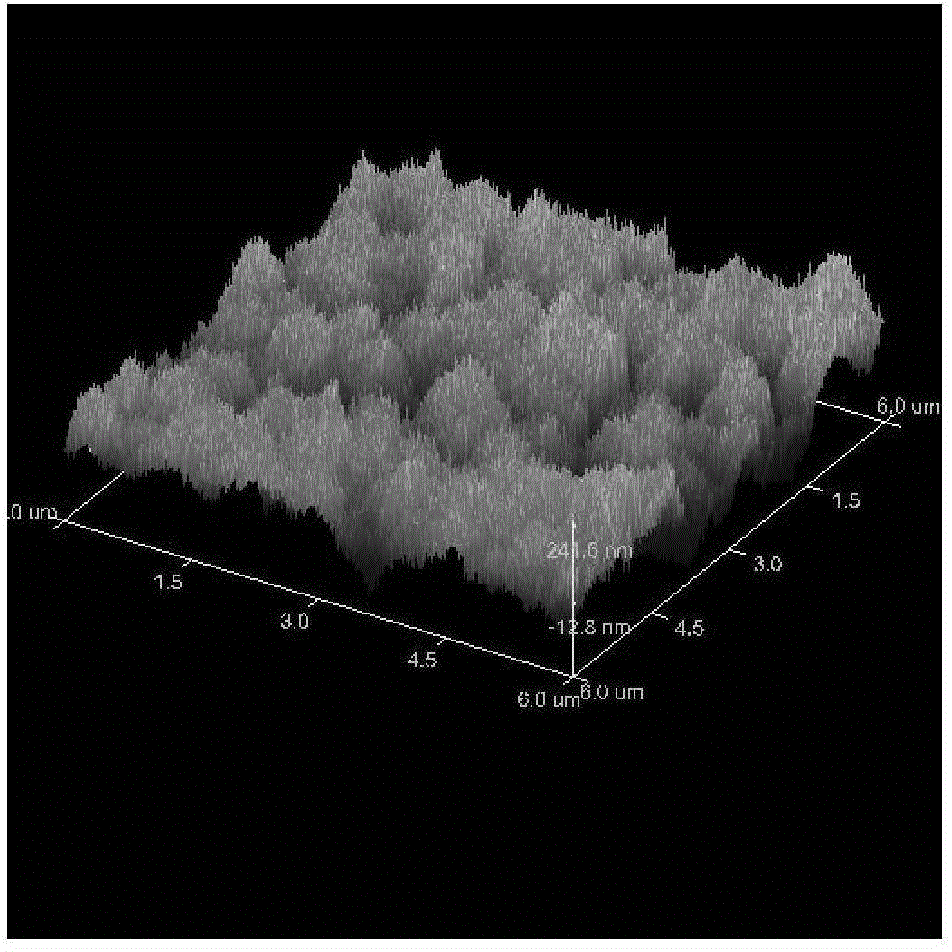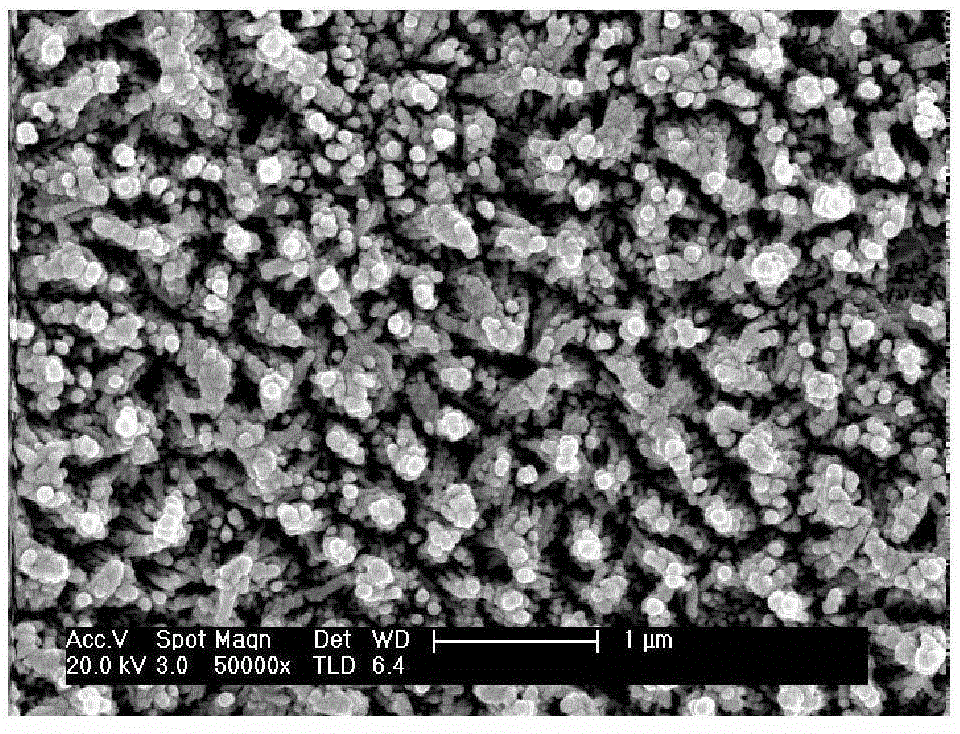Preparing method for aluminum foil gradient wettability surface with nano coarse structure
A gradient wetting and rough structure technology, which is applied to the surface coating liquid device, special surface, surface reaction electrolytic coating, etc., can solve the problems of complex process, high cost and difficult control
- Summary
- Abstract
- Description
- Claims
- Application Information
AI Technical Summary
Problems solved by technology
Method used
Image
Examples
example 1
[0023] (1) Choose 0.1mm 8081-H22 aluminum foil, cut it into the required size (1cm×20cm), wash it with acetone and deionized water in an ultrasonic environment for 5 minutes, dry it and immerse it in 1mol / L aluminum foil Treat in NaOH aqueous solution for 60s to remove the oxide film on the surface, take it out, wash it with deionization, and dry it for use;
[0024] (2) A mixed aqueous solution composed of phosphoric acid and glycerol is used as the electrolyte. The anode and cathode are strip-shaped aluminum foils of the same size. The two poles are placed in parallel and facing each other with a distance of 40mm. 180min, the current density is 3.2mA / cm 2 . After the oxidation, take out the aluminum foil, wash it with ethanol and deionized water, and blow it dry, and you can get a nano-rough structure on the surface of the anode strip-shaped aluminum foil facing the cathode. The mixed aqueous solution composed of phosphoric acid and glycerol is prepared by the following me...
example 2
[0029] (1) Choose 0.1mm 8081-H22 aluminum foil, cut it into the required size (1cm×15cm), wash it with acetone and deionized water in an ultrasonic environment for 5 minutes, dry it, and immerse it in a molar concentration of 1mol / L Treat in NaOH aqueous solution for 45s to remove the oxide film on the surface, take it out, wash it with deionization, and dry it for use;
[0030](2) A mixed aqueous solution composed of phosphoric acid and glycerol is used as the electrolyte. The anode and cathode are strip-shaped aluminum foils of the same size. The two poles are placed in parallel and facing each other with a distance of 40mm. 180min, the current density is 3.2mA / cm 2 . After the oxidation, take out the aluminum foil, wash it with ethanol and deionized water, and blow it dry, and you can get a nano-rough structure on the surface of the anode strip-shaped aluminum foil facing the cathode. The mixed aqueous solution composed of phosphoric acid and glycerol is prepared by the f...
example 3
[0034] (1) Select 0.1mm 8081-H22 aluminum foil, cut it into the required size (1cm×10cm), wash it with acetone and deionized water in an ultrasonic environment for 5min, dry it and immerse it in NaOH with a molar concentration of 1mol / L Treat in aqueous solution for 30s to remove the oxide film on the surface, take it out, wash it with deionization, and dry it for later use;
[0035] (2) A mixed aqueous solution composed of phosphoric acid and glycerol is used as the electrolyte. The anode and cathode are strip-shaped aluminum foils of the same size. The two poles are placed in parallel and facing each other with a distance of 40mm. 180min, the current density is 3.2mA / cm 2 . After the oxidation, take out the aluminum foil, wash it with ethanol and deionized water, and blow it dry, and you can get a nano-rough structure on the surface of the anode strip-shaped aluminum foil facing the cathode. The mixed aqueous solution composed of phosphoric acid and glycerol is prepared by...
PUM
| Property | Measurement | Unit |
|---|---|---|
| Current density | aaaaa | aaaaa |
| Roughness | aaaaa | aaaaa |
| Size | aaaaa | aaaaa |
Abstract
Description
Claims
Application Information
 Login to View More
Login to View More - R&D
- Intellectual Property
- Life Sciences
- Materials
- Tech Scout
- Unparalleled Data Quality
- Higher Quality Content
- 60% Fewer Hallucinations
Browse by: Latest US Patents, China's latest patents, Technical Efficacy Thesaurus, Application Domain, Technology Topic, Popular Technical Reports.
© 2025 PatSnap. All rights reserved.Legal|Privacy policy|Modern Slavery Act Transparency Statement|Sitemap|About US| Contact US: help@patsnap.com



